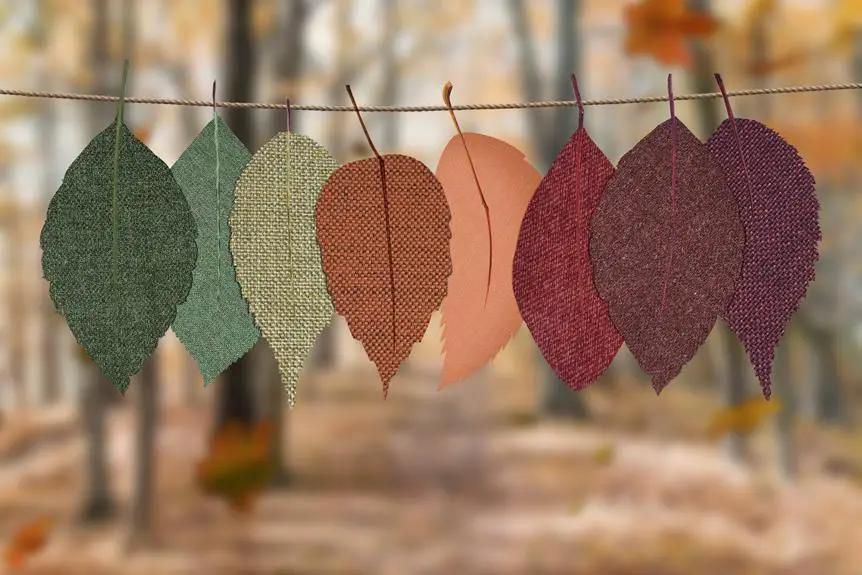You know the saying, 'a stitch in time saves nine'? When it comes to fabric snags, a little proactive care can save you from a world of frustration.
Fortunately, there are 5 simple and effective ways to remove snags from fabrics. Whether it's using a fabric shaver, employing the needle and thread technique, utilizing a snag repair tool, trying the sweater stone approach, or even freezing the fabric, you have multiple options at your disposal.
By mastering these methods, you'll be able to keep your fabrics looking smooth and snag-free, ensuring that your favorite clothes and textiles remain in top condition.
Key Takeaways
- Mechanical methods like using a fabric shaver or a sweater stone can effectively remove snags from fabrics.
- Manual techniques such as using a needle and thread or a snag repair tool can also be used to repair snags.
- Regularly using preventive measures like using a fabric shaver and checking for loose threads can help prevent snags from occurring.
- Alternative methods like freezing the fabric can be used to remove snags as well.
Fabric Shaver Method
One effective way to remove snags from fabrics is by using a fabric shaver to carefully shave off the raised fibers.
Fabric care involves taking proactive measures to maintain the quality of your garments, and pilling prevention is a key aspect of this.
When using a fabric shaver, it's important to place the fabric on a flat surface and gently run the shaver over the pilled areas. The sharp blades of the shaver will trim the raised fibers, leaving the fabric smooth and free from snags.
It's crucial to handle the shaver with care to avoid damaging the fabric, especially delicate materials like wool or cashmere.
Regularly using a fabric shaver as part of your fabric care routine can help prevent pilling and keep your garments looking new for longer.
Remember to clean the shaver after each use to maintain its effectiveness.
Needle and Thread Technique
To remove snags from fabrics using the needle and thread technique, carefully thread the needle and gently stitch the snagged area to secure the loose fibers in place. This method is a fundamental skill in DIY clothing repair and requires some sewing basics. Here are the steps to effectively use the needle and thread technique:
- Gather the Necessary Supplies: Before you begin, make sure you have a needle, thread that matches the fabric, and a pair of small, sharp scissors.
- Secure the Loose Threads: Start by gently pulling the snagged threads to the back of the fabric. This will help in aligning the loose fibers for stitching.
- Thread the Needle Properly: Ensure that the thread is securely knotted at the end and follow proper threading techniques to avoid tangles and make the stitching process smooth.
- Stitch Carefully: Use small, even stitches to sew the snagged fibers back into place. Avoid pulling the thread too tightly, as this could cause puckering in the fabric.
Mastering the needle and thread technique is a valuable skill for anyone looking to maintain and repair their clothing with precision and care.
Using a Snag Repair Tool
You can effectively remove snags from fabrics using a snag repair tool by gently maneuvering the tool over the snagged area to pull the loose fibers back into place. This tool is designed to safely tuck the snagged thread back into the fabric without causing any damage. When using a snag repair tool, it's essential to handle the fabric delicately to avoid further snags or tears.
To effectively care for your fabrics and prevent snags, consider the following tips:
| Snag Prevention | Fabric Care |
|---|---|
| Avoid wearing sharp jewelry or accessories that could catch on the fabric | Follow the care instructions on the fabric label |
| Turn the garment inside out before washing to reduce friction | Use a garment bag when washing delicate fabrics |
| Store garments in a way that prevents them from rubbing against rough surfaces | Regularly check and repair loose threads on garments |
Sweater Stone Approach
The Sweater Stone is an effective tool for removing snags from fabrics, gently maneuvering over the snagged area to pull loose fibers back into place without causing damage.
Here are some key points to consider when using a sweater stone to remove snags from fabrics:
- Sweater Stone Benefits: The sweater stone is a reusable, long-lasting tool that effectively removes snags without the need for sharp blades or scissors. It works well on a variety of fabrics, including wool, knits, and synthetic materials, making it a versatile option for snag removal.
- Alternative Methods: While the sweater stone is an excellent choice for removing snags, there are other methods such as using a crochet hook, needle, or even a disposable razor. However, these alternatives may require more skill and care to avoid causing further damage to the fabric.
- Sweater Stone Care, Best Practices: To ensure the longevity of your sweater stone, it's essential to clean it regularly by simply rinsing it with water and allowing it to air dry. Additionally, store it in a dry place to prevent it from deteriorating.
- Using the Sweater Stone: When using the sweater stone, gently brush it over the snagged area in one direction, lifting off any loose fibers. Be patient and repeat the process as needed until the snag is smoothed out.
Freezing the Fabric Trick
Try freezing the snagged fabric to help ease out the fibers and smooth the snag. This alternative method is a simple and effective way to remove snags from delicate fabrics.
First, place the snagged garment in a plastic bag, ensuring the snagged area is flat and not bunched up. Then, seal the bag and place it in the freezer for a few hours. The cold temperature causes the fibers to contract, making the snag less prominent and easier to manipulate.
After freezing, gently stretch the fabric in different directions to help loosen the snag. Be careful not to pull too hard, as this can cause further damage. This fabric care technique is particularly useful for knitted or woven fabrics like wool, silk, and cashmere. It's a gentle approach that can be used as a first step before attempting more abrasive methods.
Remember to follow up with a light steaming or ironing to further smooth out the fabric. By utilizing alternative methods like freezing, you can effectively care for your fabrics and maintain their quality.
Frequently Asked Questions
Can I Use These Methods on Delicate Fabrics Like Silk or Chiffon?
Yes, you can use gentle methods on delicate fabrics like silk or chiffon. Consider the fabric type and the intricacy of the design. Natural fabrics may require different care than synthetic ones to preserve the fabric's longevity.
Will These Methods Work on Fabrics With Intricate Patterns or Designs?
Yes, these methods will work well on patterned fabrics. The intricacy of the design will be preserved while effectively removing snags. Use gentle snagging techniques to ensure the preservation of intricate patterns.
Are There Any Potential Risks or Damage to the Fabric When Using These Techniques?
When removing snags from fabrics, potential risks and fabric damage can occur if not done carefully. Always use gentle techniques and avoid using sharp objects to prevent any unwanted harm to the fabric.
How Long Will the Repaired Fabric Last Before the Snags Reappear?
The longevity of repairs depends on how well you prevent fabric snags. Proper care, like washing delicate items in a mesh bag and avoiding sharp objects, can help your repairs last longer.
Can These Methods Be Used on Both Natural and Synthetic Fabrics?
Yes, these methods can be used on both natural and synthetic fabrics. Proper fabric care and maintenance, including textile repair and restoration, will help extend the lifespan of your garments and keep them looking great.
- Recycling Nonwoven Fabrics: Is It Possible? - July 11, 2025
- Recycling Nonwoven Fabrics: Is It Possible? - July 11, 2025
- Recycling Nonwoven Fabrics: Is It Possible? - July 11, 2025







